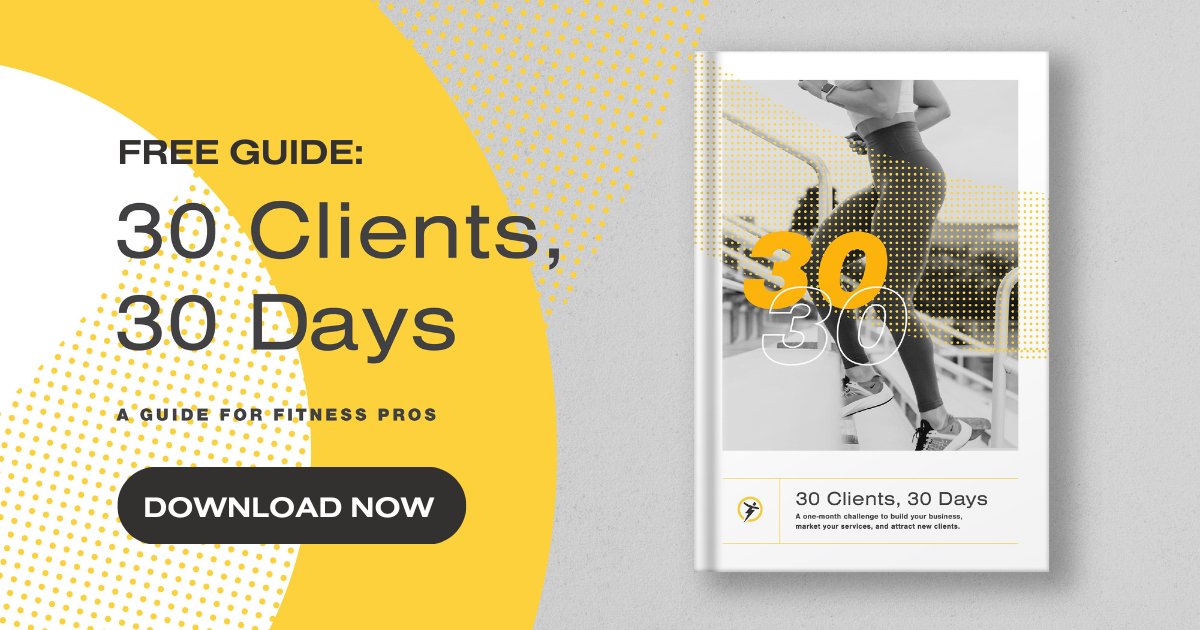Wondering what to put on your personal trainer consultation form or why you even need one? We’re breaking it all down here.
Team Trainerize
Building a thriving business as a personal trainer takes way, way more than pumping iron (and supporting people in pumping iron). Behind the scenes, there’s crucial admin work that sets you up to support your clients—and that work starts with personal trainer consultation forms.
Many trainers are overwhelmed by all the different types of intake forms. Some forms help you gather information about your clients’ athletic and medical history, so you have all the context you need to support their fitness journey. Some forms lay out client-trainer expectations, so you’ve got defined goals and boundaries to work towards. And some forms protect you from liability, just in case an accident happens during training. (Knock on wood that won’t happen, but being prepared is always smart.)
At Trainerize, our whole focus is helping personal trainers onboard and keep training clients, and we’ve pulled together a complete guide to personal trainer consultation forms. Here, we’ll break down why consultation forms are essential for every fitness business, the five most important types, and tips for choosing the right fitness consultation questions for your training practice. So let’s go!
Skip ahead:
What is a personal trainer consultation form?
Why are personal trainer intake forms important?
5 types of fitness consultation forms
Client agreement and goal setting forms
4 tips for using personal trainer consultation forms
Manage all your personal trainer consultation forms with Trainerize
What is a personal trainer consultation form
Every personal trainer consultation form is an information-gathering tool. They help you learn more about your clients, set shared expectations and goals, and spot potential challenges early on. Generally, you’ll get clients to fill out intake forms before your first training session, but some types of consultation forms can be filled out later on. (Like referral forms and goal-setting forms.)
Why are personal trainer intake forms important?
Personal trainer intake forms guarantee you’ve got the context you need to support every client in achieving their fitness goals. They’re the difference between starting your first session with “so, tell me about yourself” and “you want more core strength to be a better rock climber—let’s dive into it.” With that level of client information, you’ll build a steady training roster.
Besides helping you laser-focus your training on your clients’ goals, intake forms can help protect your clients from injury and protect you from liability. Everyone has different medical histories, fitness backgrounds and levels of knowledge about their body, and liability forms are crucial for setting up informed consent. (Fitness isn’t risk-free, after all!)
🔗 Kick off your online training business!
FREE GUIDE: Get 30 Clients in 30 Days
5 types of fitness consultation forms
PAR-Q+ Forms
The Physical Activity Readiness Questionnaire for Everyone (PAR-Q+) form is a standardized intake form that helps you assess your clients’ health, and determine whether they’re good to start training. Each question is a simple yes-or-no answer, and if your client answers “no” to each, you’re good to start training.
Waivers of Liability
A litigious client slipping on the treadmill could cost you thousands of dollars—unless you had them sign a waiver of liability. Waivers lay out the risks of working with a personal trainer, and by signing, clients acknowledge that they’re informed of the risks and assuming those risks themselves. Everyone signs waivers, so your clients won’t bat an eye when you ask them to sign one.
Client agreement and goal-setting forms
Client agreement and goal-setting forms help you gain a better understanding of your clients’ specific fitness goals, and set expectations about the services you’ll deliver. You’ll structure your training differently for a client who wants to lose weight than for a client who’s trying to bulk up for a bodybuilding competition, and they make program design WAY easier for you as a personal trainer. Defining explicit goals also helps your client commit to the work they’re doing (which means they’ll stick with you longer).
Medical history forms
The PAR-Q+ form is a quick double-check for immediate medical red flags, but medical history forms go much deeper, giving you vital information for planning safe workouts. There’s many different types of medical history forms, but this form from the American College of Sports Medicine is the best out there. With it, you’ll get a 360° view of your clients’ medical histories AND learn about their goals, too.
Referral forms
Client referral forms aren’t about goals, liability or safety—they’re about building your fitness community and getting more clients. Once you’ve built solid trust with a client, you can provide them a referral form so they can put you in touch with their friends and family.
You should offer your clients discounts for each referral they provide, so they’ve got an incentive (beyond the gift of fitness) to help you hook clients. It’s win-win for everyone, and a great way to add more clients to your training roster. (We’ve got a guide to starting your own client referral program ready to go, too.)
4 tips for using personal trainer consultation forms
Ask more than just fitness questions
Health is holistic, and understanding who your clients are outside the gym fitness will help you provide better training from the jump. Ask about nutrition, ask about their medical history, and ask about their goals. It won’t take much more time, and you’ll be able to tailor your training exactly to their needs.
Use standardized forms
If there’s an industry-standard for a specific type of form, use it. Clients will feel more comfortable filling out each form, and they won’t second-guess where their personal information is going. PAR-Q+ forms and medical history forms are the most important ones
Only collect the necessary info
Asking for too much information can be off-putting, so make sure you’re only asking for what’s necessary. You don’t need to know how many times your client ate spinach in the last 14 days, but you do need to know whether they have been treated for heart issues. Focus on the priorities!
Fill forms out for clients, if appropriate
When you’re goal-setting and defining expectations IRL, you can make completing consultation forms easier by asking questions and transcribing clients’ answers. This way, they’ll get space to think and outline their goals while you do the hard parts for them.
Try a form builder
Form builders like Paperform integrate directly with Trainerize, and make it easy to start using personal training consultation templates. You’ll save yourself TONS of effort on design and formatting using form templates, so you can focus on crafting the right fitness consultation questions.
Manage all your consultation forms with Trainerize
Now that you know all the important types of consultation forms, you’re ready to start managing the client intake process with Trainerize. Using our Zapier integration, you can invite new clients to fill out and sign waivers and PAR-Q forms, so collecting consultation forms is a piece of cake.
You’ll then have all your client information inside Trainerize, and be better able to deliver services like meal plans and online training programs. With only a fraction of the effort, you’ll be able to keep your clients happy and scale your personal training business. (And we love to see it.)


